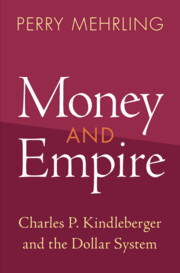Book contents
- Money and Empire
- Studies in New Economic Thinking
- Money and Empire
- Copyright page
- Dedication
- Contents
- Preface
- Introduction
- I Intellectual Formation, 1910–1948
- II International Economist, 1948–1976
- III Historical Economist, 1976–2003
- Chapter 8 Independence
- Chapter 9 Chef d’Oeuvre
- Chapter 10 Leadership
- Bibliography
- Index
Chapter 8 - Independence
from III - Historical Economist, 1976–2003
Published online by Cambridge University Press: 11 June 2022
- Money and Empire
- Studies in New Economic Thinking
- Money and Empire
- Copyright page
- Dedication
- Contents
- Preface
- Introduction
- I Intellectual Formation, 1910–1948
- II International Economist, 1948–1976
- III Historical Economist, 1976–2003
- Chapter 8 Independence
- Chapter 9 Chef d’Oeuvre
- Chapter 10 Leadership
- Bibliography
- Index
Summary
As the end of his MIT career approached, Kindleberger took on the challenge of explaining the catastrophic world depression that had been the context of his own intellectual formation. As against current Keynesian and monetarist orthodoxy, he wrote in defense of the conventional wisdom of his youth which, in his view, provided not only a viable explanation of events but even more a viable methodology for doing economics more generally. Comparative economic history would henceforth be his evangelical mission, explicitly so in his first postretirement book Manias, Panics, and Crashes, which became a best-seller.
Keywords
- Type
- Chapter
- Information
- Money and EmpireCharles P. Kindleberger and the Dollar System, pp. 187 - 208Publisher: Cambridge University PressPrint publication year: 2022

